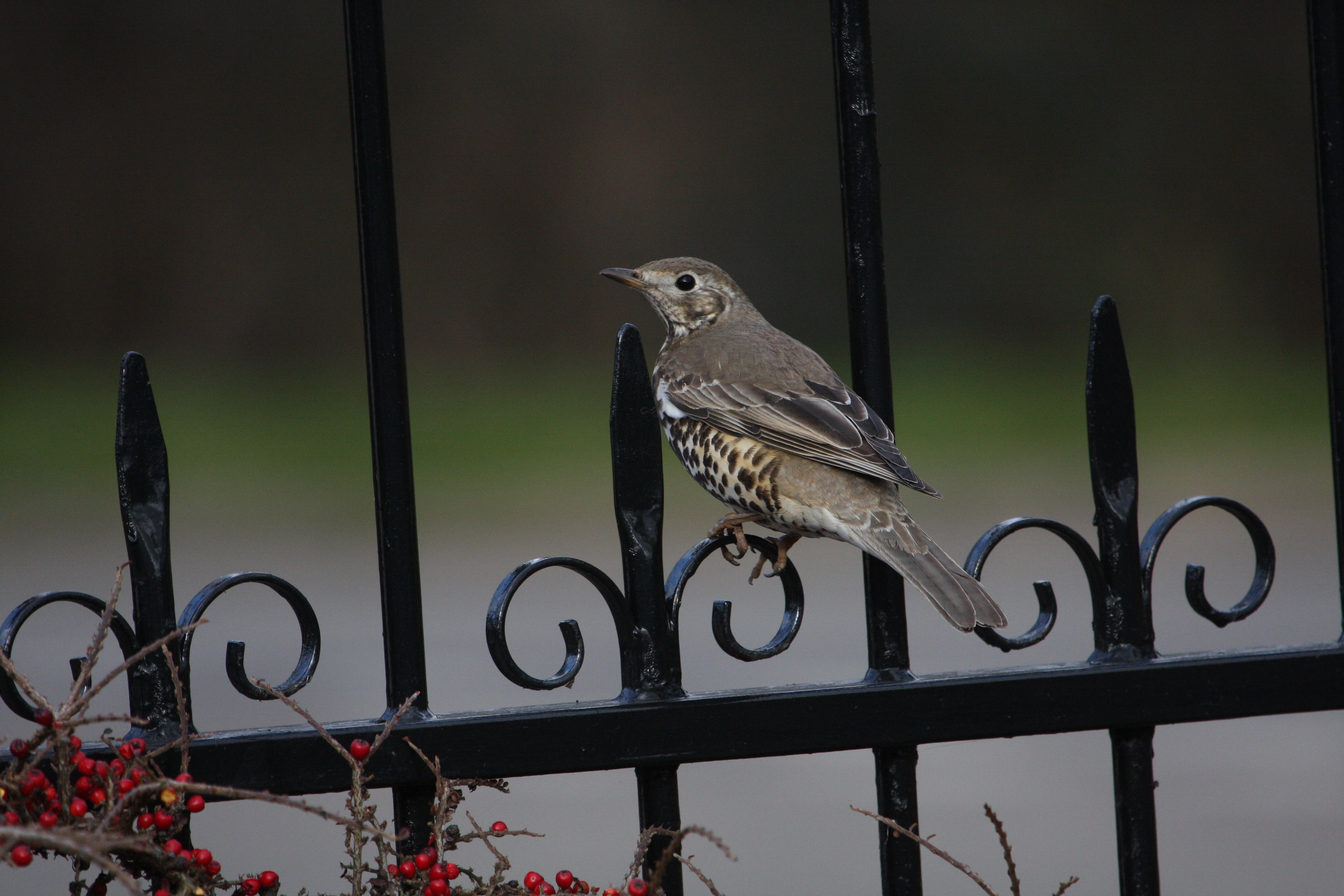‘These sculptures are a melancholy time capsule of songs that act as totems to remind us how fragile our relationship with nature is. The birds’ songs are memorialised as sculptures. By reading the shape of the sculpture we can reconstruct the sound in our mind.’
- Andy Holden

Mistle Thrush
The wind rises, rain clouds gather, and most birds fall silent, but one song is loud and clear. This is the Mistle Thrush, the largest of the Netherlands resident thrushes. It has old grey-brown upperparts and a pale breast with large blotchy spots. It is found where there are woodlands or tall trees and with open areas for feeding nearby. It is very upright when seen on the ground. Usually strictly territorial but in late summer small flocks may form to forage for food.
Song
The ‘Stormcock’ is one of the earliest songsters of spring and revels in taking up his perch on even a blustery or shower-filled day. From high in a tree in parkland or heathland, he sings his often forlorn yet beautiful song, which gets picked up and carried on the winds. Each verse is short, barely a second or so long, and is typically composed of just a few lilting, fluty, finely-crafted notes. Each verse resembles lines of a lovelorn rhyming poem. He may not utter these words, but imagine him singing, ‘So you want to go? / I pray, go not go. / For I love you so’, in a heartfelt vein.
Listen to the birdsong
Conservation
The Mistle Thrush is a numerous species with an extensive range across Europe. There was a range expansion of this species in the 18th and early 19th century. It now appears to be declining in Europe, although this decline is not rapid or large enough for it to be yet thought vulnerable and is currently classified as ‘stable’ or ‘least concern’. However, the 2020 report “The State of the Netherland’s Birds 2022, Sovon” shows Mistle Thrush among the Woodland species declining by up to 5% and in Britain has been added to the ‘Red List’ of ‘birds of most concern’, likely linked to changes in agricultural practices, habitat and climate.

Background to the sculptures
Andy Holden (Bedford 1982) has a special interest in birds and often works with his father, Peter. Peter Holden (London, 1948) used to work for the Royal Society for the Protection of Birds and set up the annual garden bird watch in the U.K.
For the Auguries, Andy Holden identified a number of birds native to the British Isles that are in decline: the Yellowhammer, the Swift and the Mistle Thrush. The sculptures are three-dimensional representations of oscillograms, wave forms generated by recording the unique song of each bird. Wave forms of sound recordings are normally viewed horizontally; however, the sculptures are displayed vertically, pointing up towards the sky.
Each sculpture is cast in bronze, recalling the public sculptures of Henry Moore (Castleford 1898 – Much Hadham 1986) and Barbara Hepworth (Wakefield 1903 – St. Ives 1975), who would sometimes take natural elements such as stones or flint as the starting point for their public works. The sound of each bird becomes a solid form and given the long life of bronze the sculptures could outlive the species they represent, becoming memorials to sounds that are no longer audible to future generations.
The species represented here were inspired by references in Charles Waterton’s (Walton Hall, 1782 – West Yorkshire, 1865) notebooks, and because they are species in rapid decline throughout the U.K. and in parts of Europe. The Swift, for example, has declined by over 57% in the last 25 years in parts of the U.K, and the Yellowhammer’s numbers have halved in the U.K in the past forty years. In the Netherlands many species that breed in farmland are in trouble: “Since the 1990s… the number of farmland birds has halved” (The State of the Netherland’s Birds 2022, Sovon).
The artwork is called Auguries because the ancient Romans used birds to predict the future. Augur means to portend to a good or bad outcome, or to foretell.
Throughout history observing birds has taught us about the world around us and helped us make predictions for the future. In 1962 American author Rachel Carson (Springdale, 1907 – Silver Spring, 1964) wrote Silent Spring, a book that began with her observations about the decline in bird song and lead her to identify the destructive effect the widespread use of pesticides was having on the countryside and the food chain. Her book sparked the environmental movement across the world.


